#Travel Friendly Airbnb and Guest House - Vacationing in #Accra and looking for an Airbnb to stay? We Got You! Vacation rentals in Greater Accra Region Whatsapp +1 747 4779581 @Charlesfrize
This is important because it relates to Short stay apartments in Accra #AccraGhana #AburibotanicalGardens #Senchi #TravelTours #KakumNationalPark #KwameNkrumahMemorialPark #WliWaterfalls #ElminaCastle #VisitGhana #AccraAccommodation #Africandiaspora #airbnb #Ghana #Dodowa #Oyibi #ValleyviewUniversity #Adenta
Kakum National Park
Famed for its treetop walkway, it provides thrilling views of the forest from above.
Mole National Park Kwame Nkrumah Memorial Park And Mausoleum Ghana Travel and Tourism Shai Hills Reserve
Kakum National Park, located in Assin Attandanso in Ghana's Central Region, is the country's most frequented tourist spot. The park is renowned for its 333-meter canopy walkway, which is suspended up to 27 meters above the ground from ancient trees, some over 300 years old. This treetop walk is just one of the many attractions Kakum offers. Visitors can embark on various trails and guided walks to immerse themselves in the tranquility of the rainforest.
The park is also a top destination for bird enthusiasts, boasting over 300 bird species, including eight that are globally threatened. While the forest is home to creatures like the forest elephant, leopards, bongos, bushbucks, and numerous primates, spotting these animals can be a challenge. Additionally, more than 600 butterfly species have been documented. Nighttime wildlife viewing is possible, and experienced guides are on hand to lead nighttime explorations. The park is welcoming to families.
Situated about a four-hour drive from Accra, it's best to arrange your own transport in advance. Alternatively, you can use public transportation and transfer from Cape Coast. For those wishing to extend their stay, a treehouse offers overnight accommodations for wildlife observation, and an outhouse is available. At the visitor center, two cafes provide basic meals, snacks, and fresh juices.
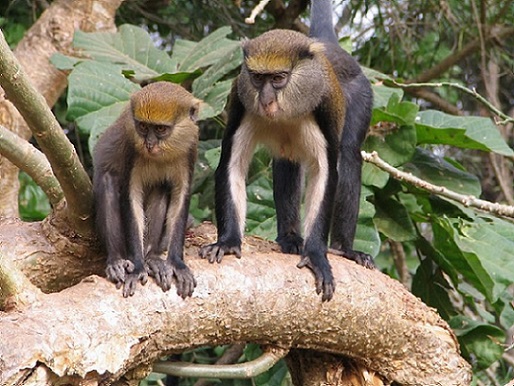
In Africa, there are only three places featuring a canopy walkway, and this particular one stretches 350 meters (1,150 feet), linking seven tree canopies to offer a unique perspective of the forest.
Among the park's most prominent endangered animals are the Diana monkey, the giant bongo antelope, the yellow-backed duiker, and the African elephant.
The park is also a designated Important Bird Area, acknowledged by BirdLife International, with the bird area entirely overlapping with the park's territory. A survey of avian species confirmed the presence of 266 bird species within the park, including eight of global conservation concern.
One such species drawing attention is the white-breasted guineafowl. Additionally, nine hornbill species and the African grey parrot have been documented in the area. Abundant in butterflies, a new species was discovered there in 1993. As of 2012, Kakum hosts the highest concentration of forest elephants in Ghana.
The Republic of Ghana's Museums and Monuments Board has suggested that UNESCO recognize the park as a natural World Heritage Site under criteria vii and x. The proposal, submitted in 2000, is included in the tentative list of World Heritage Sites.
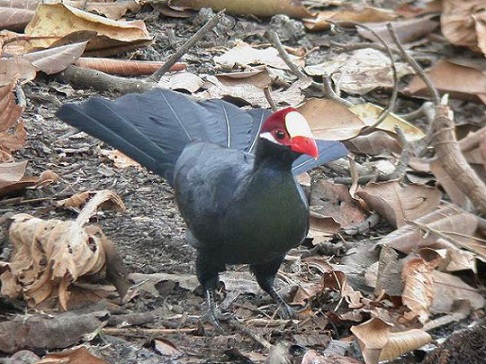
Narrative
In 1931, the region encompassing the source of the Kakum River was designated as a forest reserve, overseen by the Forestry Division. Throughout this era, logging activities were widespread, especially targeting the mahogany (Khaya ivorensis) trees. These logging operations persisted until 1989 when the reserve's management was handed over to the Wildlife Department.
In 1990, a project initiated by the United Nations Development Program led to the creation of a Feasibility Study and an initial 5-year Management Plan aimed at developing Kakum National Park into an ecotourism site. This study included early assessments of the biodiversity within the Kakum Forest Reserve and the neighboring Assin-Attandanso Forest Reserve, as well as a survey of the elephant population.
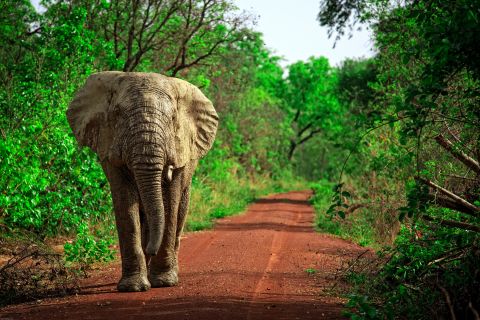
The Feasibility Study and initial Management Plan spanning five years were crafted through a cooperative and consultative approach, bringing together a consulting biologist, forestry and wildlife officials, local communities, Ghanaian academic institutions, regional government representatives, and other significant contributors (Dudley 1992).
It is essential to acknowledge that Mr. Ebenezer Kwasi Agbley, who was the Central Regional Manager for the Ghana Tourist Board at the time, originated this vision through a program he launched and executed – the Tourism Development Scheme for the Central Region (TODSCER). This initiative eventually expanded into the CENTRAL REGION DEVELOPMENT PROGRAM under a newly established body, the Central Region Development Commission (CECECOM).
Mr. Agbley presented the TODSCER initiative in the United States, successfully attracting numerous funding bodies, both bilateral and multilateral, from the donor community, which supported the project until its fruition.
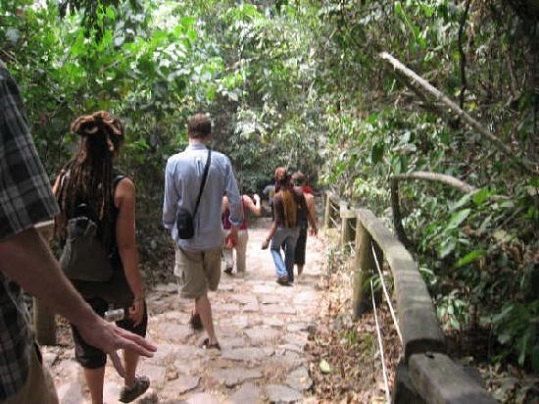
In a subsequent phase of the project, Game & Wildlife was enlisted to oversee and uphold the Park's operations.
In 1992, the Wildlife Department officially designated Kakum as a park under the Wildlife Reserves Regulations (Ll 1525), incorporating it into the Kakum Conservation Area along with the Assin Attandanso Forest Reserve.
Following an evaluation of the area's rich fauna, the region was divided into Kakum National Park and Assin Attandanso Forest Reserve within the same year.
This division was justified on the grounds that Cape Coast, along with 33 other surrounding towns and villages, still required timber from the forest and drinking water supplied by the Kakum River.
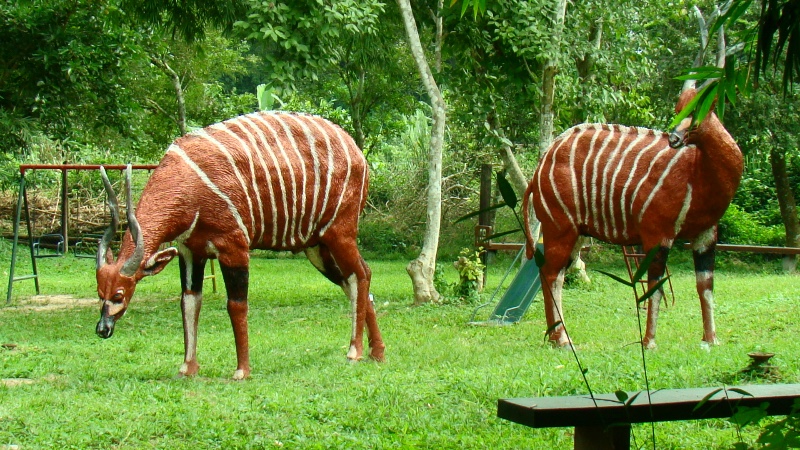
Geographical Studies
The Kakum River, which originates within the park's boundaries, lends its name to this natural reserve. The park is traversed by tributaries such as the Obuo, Afia, Sukuma, Nemimi, Aboabo, and Ajuesu rivers. Positioned 33 kilometers (21 miles) north of Cape Coast and Elmina, it is near the quaint village of Abrafo. Visitors can easily reach the park via taxis from the town center or through organized tour buses.
At the park's entry point, there is a visitor center that features a restaurant, lodge, picnic spot, camping site, and a wildlife education facility. Encircling the park are 33 villages, along with fields where food crops and cocoa are cultivated.
The park is situated at an elevation ranging from 135 to 250 meters (443 to 820 feet) and belongs to the Guineo-Congolian ecoregion, categorized under IUCN Category II. Adjacent to the park is the Assin Attandanso Resource Reserve, a game production area. The terrain primarily consists of moist evergreen forest and some areas of seasonally dry semi-deciduous forest. The land is composed of 90% forest, 3% man-made terrestrial landscape, with the remainder uncategorized. The region receives an average yearly rainfall of 1,380 mm.
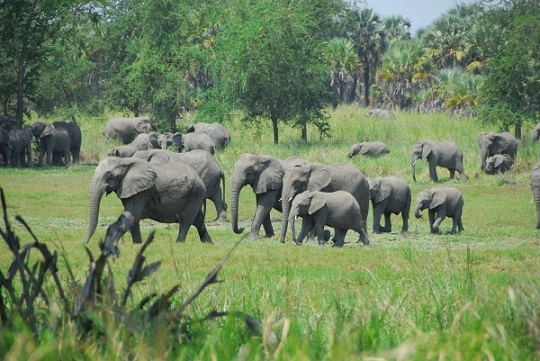
Botany
The primary type of vegetation present in Kakum is the moist forest. Within the park, other forms of vegetation such as swamp forests—both permanent and seasonal—along with riverine forests can also be found. Additionally, the park showcases the Boval vegetation of the Hildegardia barteri-Polycarpaea tenuifolia community, which thrives on exposed granite rocks and in areas with shallow soil.
The park is home to 105 species of vascular plants, which include 57 tree species, 10 shrubs, 9 climbers, 17 herbs, and 12 types of grasses. Epiphytic plants, including orchids, ferns, and figs, are known to grow on the trees and shrubs.
Between 1975 and 1989, logging activities were widespread in the park. However, these areas have since regenerated into secondary forests, characterized by a dense green canopy and vine tangles. This regeneration does not cover the entire park, as a significant portion of the original dense forest remains preserved.
The IUCN has specifically identified a list of plant species categorized under Moist forests, Swamp forest, Periodic swamp forest, Riverine forest, and Boval vegetation.
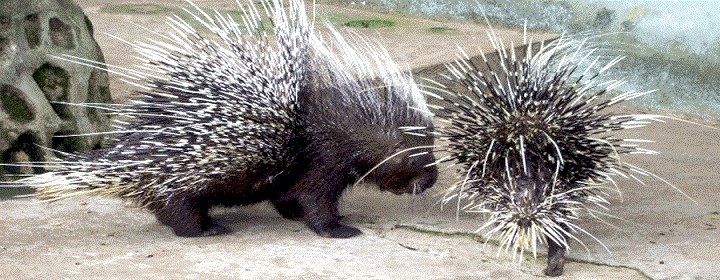
Fauna
The park is home to several uncommon creatures, including forest elephants, forest buffalo, civets, and various feline species.
There are approximately two hundred forest elephants (Loxodonta africana cyclotis) within its boundaries, alongside the potto (Perodicticus potto), Demidoff's galago (Galago demidovii), African civet (Viverra civetta), and the two-spotted palm civet (Nandinia binotata). The park also shelters leopards (Panthera pardus), bongos (Tragelaphus euryceros), various types of duikers (small antelopes), red river hogs (Potamochoerus porcus pictus), giant forest hogs (Hylochoerus meinertzhageni), long-tailed pangolins (Manis tetradactyla), white-bellied pangolins (Manis tricuspis), giant pangolins (Manis gigantea), several species of forest squirrels, the North African crested porcupine (Hystrix cristata), dwarf crocodiles (Osteolamus tetraspis), monitor lizards, Home's hinged tortoises, serrated tortoises, and many other species of wildlife.
Among the primates inhabiting the park are the white-thighed colobus (Colobus vellerosus, VU), the olive colobus (Procolobus verus, LR/nt), Diana roloway monkeys (Cercopithecus diana roloway, CR), and forest elephants (Loxodonta africana cyclotis, EN), the latter of which are spread across the nation.
The initial feasibility assessment for creating Kakum National Park involved an initial biodiversity survey focusing on the Kakum Forest Reserve and the neighboring Assin-Attandanso Forest Reserve, as well as an investigation into the local African Forest Elephant population. In 1990, based on spoor analysis, the elephant population was estimated to be between 100 and 150 individuals (Dudley, Mensah-Ntiamoah, & Kpelle 1992).
Avifauna
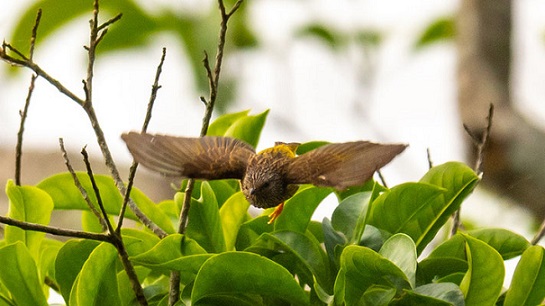
In 2002, BirdLife International recognized the park region as one of Ghana's Important Bird Areas, based on criteria A1, A2, and A3. A total of 266 avian species have been documented, with an additional 56 species identified but pending confirmation. All observed species are local inhabitants, and the majority fall under the Least Concern category.
However, some species are classified as Near Threatened on a global scale, including the green-tailed bristlebill (Bleda eximius), red-fronted antpecker (Parmoptila rubrifrons), rufous-winged illadopsis (Illadopsis rufescens), and copper-tailed glossy-starling (Lamprotornis cupreocauda). The species deemed Vulnerable comprise the white-breasted guineafowl (Agelastes meleagrides), brown-cheeked hornbill (Bycanistes cylindricus), yellow-casqued hornbill (Ceratogymna elata), and yellow-bearded greenbul (Criniger olivaceus).

Unique Attributes
A notable attraction is Komfo Boateng's Shrine, a circular stone near Aboabo, with a diameter of roughly 100 meters (330 feet), surrounded by a verdant mix of Ceiba pathandra, Albizia furruginea, and Ricinodendron heudelotii.
The park is famous for its extensive series of aerial bridges known as the Kakum Canopy Walkway, situated at the forest's upper level, offering a rare opportunity to explore the forest from above, a feature unparalleled across Africa.
At an elevation of 40 meters (130 feet), visitors can approach the edges and observe both flora and fauna from a unique perspective otherwise unreachable.
Spanning 330 meters (1,080 feet), the walkway traverses over seven bridges. Some of the forest's tree canopies tower above 50 meters (160 feet). Constructed with wire cables, aluminum steps, and wooden planks, the walkway is enveloped in netting for security.
Currently, a new observation platform is being built, which will enable visitors to ascend into the canopy without needing to navigate the canopy walkway.
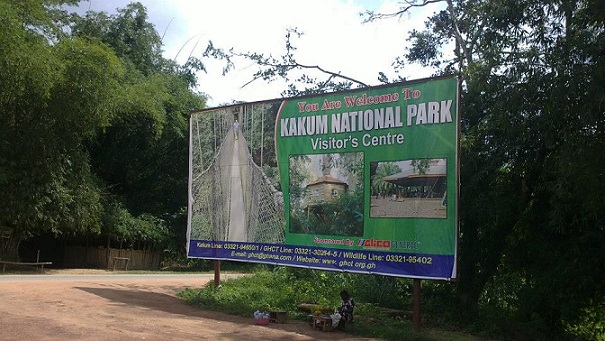
The Canopy Walkway was constructed by a pair of Canadian engineers from Vancouver, with the help of five Ghanaians, who are part of the Ghana Heritage Conservation Trust—overseers of the Kakum National Park Visitor Centre—and have been responsible for its upkeep ever since.
The idea for creating a canopy walkway at this site was inspired by Joseph Dudley, a conservation biologist working with Conservation International. He managed the drafting of the Feasibility Study and the initial five-year Management Plan for transforming Kakum National Park into an ecotourism hotspot, as part of a project for the United Nations Development Program (Dudley 1990).
The Park now features a Tree House, perched about 20 meters above the ground in the Secondary Forest. This structure accommodates roughly 25 individuals and offers an exciting chance for campers to experience the forest environment, especially during nighttime.
Due to the dense rainforest, various animals such as genets and leopards are nocturnal hunters, actively seeking prey. Thus, the Tree House offers a unique closeness to the wildlife of Kakum.
A skilled Tour Guide is always available to lead campers on nocturnal treks and to share Kakum Forest's folklore around a bonfire. It promises to be an exhilarating adventure.
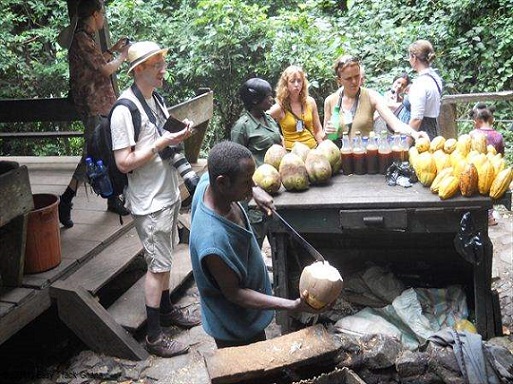
Threats and Preservation
The challenges being tackled in the park include poaching; tangible evidence has been documented through "camps, discarded matchboxes, fragments of rubber tires, used carbide, gunfire sounds, and bullet casings," as well as hunting, land encroachments, and chainsaw activities.
Conflicts between humans and wildlife arise around the park, primarily due to elephants causing damage to farmers' crops. To deter elephant raids on farms during the growing season, farmers have resorted to constructing pepper barriers around their fields for protection. The park is overseen by Ghana's Wildlife Department.
With guidance from Conservation International and financial backing from USAID, Kakum is recognized as the most safeguarded forest in Ghana.
Consequently, it has become a prominent tourist destination. Although poaching remains an issue, involving local communities in sharing the park's benefits is expected to lead to positive outcomes. Within the park, gamekeepers receive specialized training concerning the medicinal and cultural value of local plant life.
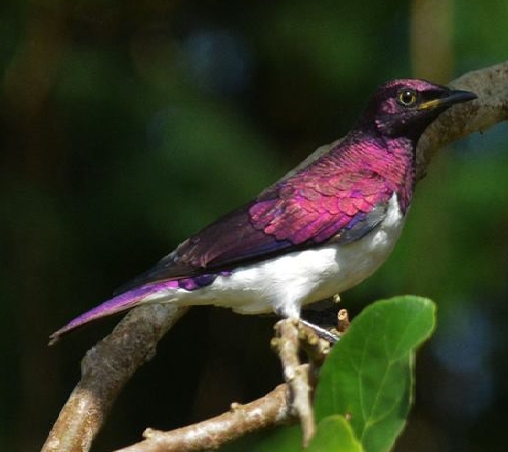
Discover Activities and Handy Advice:
- Wander through the various levels of the walkway to take in breathtaking vistas.
- Join a guided trek through the forest to uncover the healing properties of the flora.
- Embark on a nocturnal hike with a park guide to witness the forest's transformation from day to night.
- Enjoy an evening filled with drumming and dancing by a local cultural troupe.
- Attend a nighttime performance by the Nyamebekyere Kukyekukyeku or Orchestra, showcasing bamboo wind instrument melodies.
- Keep in mind that this is a rainforest, so rain can occur unexpectedly; bring a raincoat and wear comfortable shoes.
- Avoid holding heavy items, as you'll need your hands free to grip the ropes along the walkway.
- Opt for a small backpack or waist pouch to store your camera or phone while on the canopy walk.
- A brief trek precedes the bridges, so ensure you have sturdy footwear.
- If you cross the first bridge and decide not to continue, there's a shortcut to exit, so it's worth trying.
Tweet


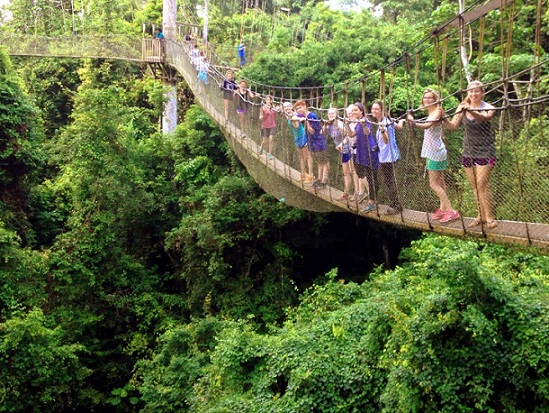





New! Comments
Have your say about what you just read! Leave a comment in the box below.